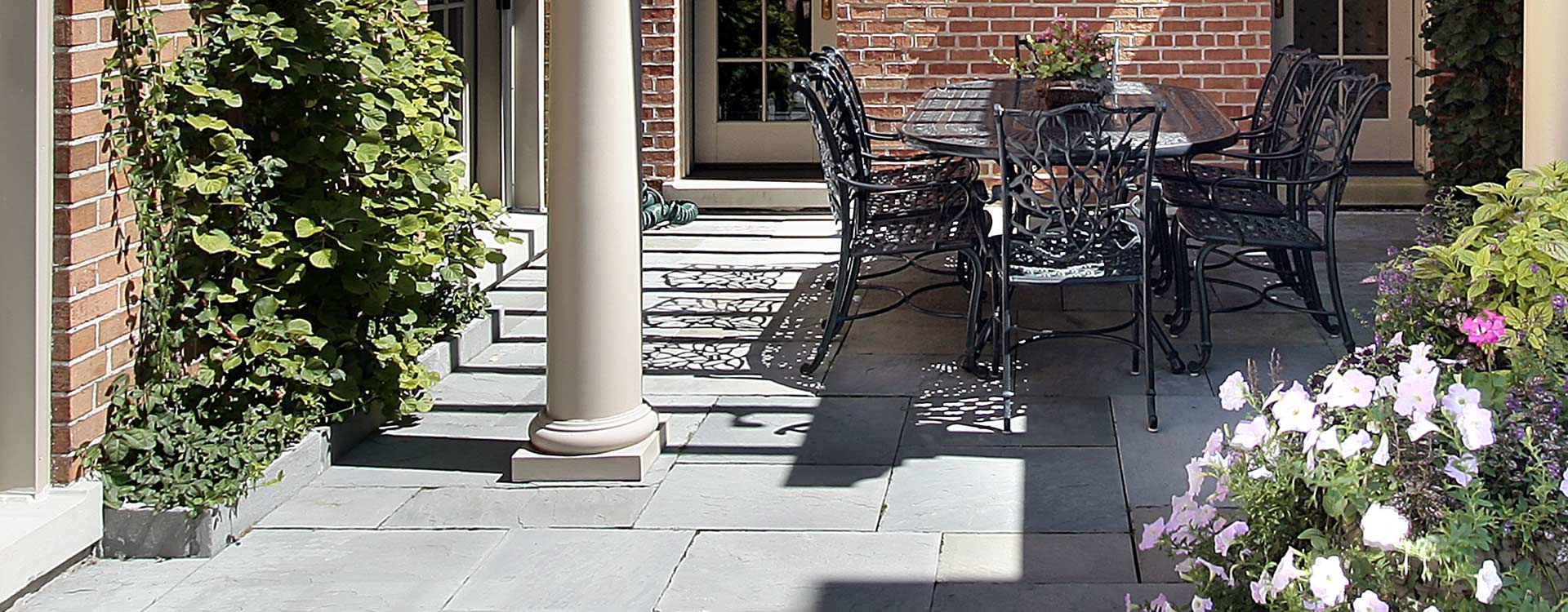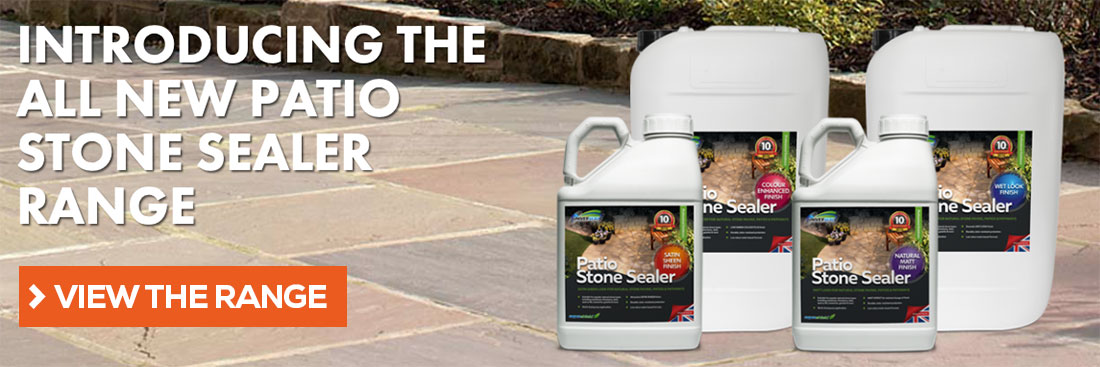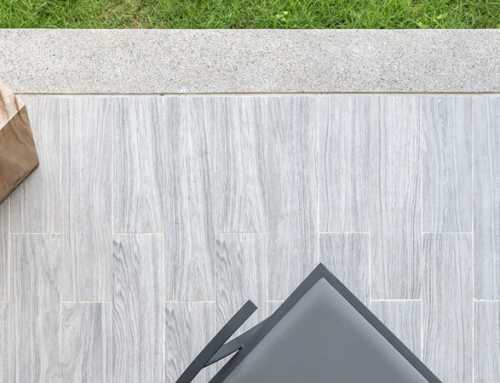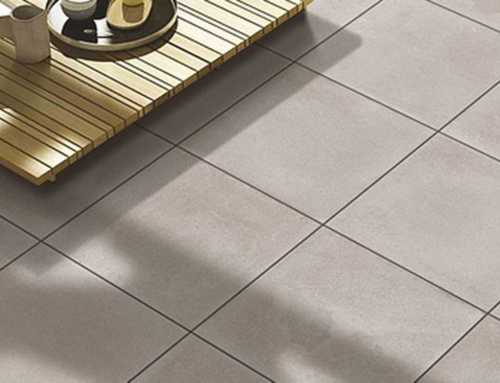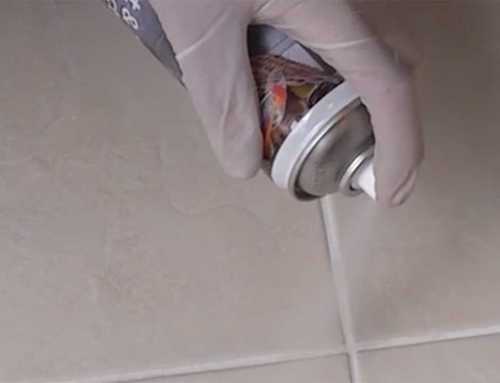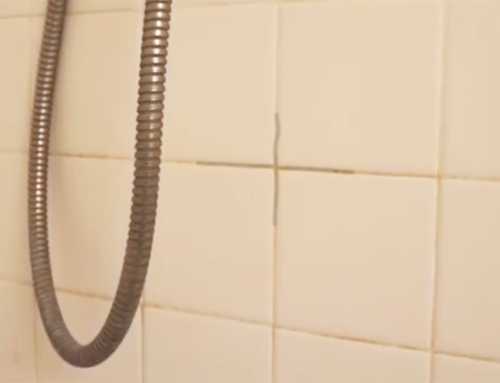How to Seal Block Paving to Stop Weeds Growing Through
Imagine carefully picking out the perfect block paving to then discover it’s been taken over by weeds… far from ideal. Luckily, this problem can be dealt with in a few simple steps which we’re going to go through below.
In simple terms, the process of sealing your block paving to stop weed growth is all about first de-weeding the area, then giving it a good clean, placing sand between the block paving and then you’re ready to seal with a quality sealant.
Handy Hint: We recommend you use the industry-leading range of Universeal block paving sealants. You can view the entire range here.
Even if you don’t have any weeds growing through your paving slabs or patio yet, prevention is better than cure.
Seeds can embed themselves deep between any gaps and so should be eliminated at the earliest stages to prevent ruining your nicely laid, great looking block paving.
But before you get started you should prepare yourself with the following equipment:
- Pressure washer
- Weed killer
- Bin bag/sack for weed disposal
- Broom
- Small brush
- Gloves/protective clothing
- Sealing roller
- Squeegee
- Jointing sand
- Jointing sealer
- DIY sprayer
And now you’re ready to get started by following this step by step guide to sealing block paving and patios where you want to stop the weeds from growing through.
How to seal patio to stop weeds growing through
1: Weed removal
Before you start, make sure you are wearing protective gloves to prevent any chemicals or irritable plants reacting badly with your skin. Also have a weed disposal bag ready, as cleaning whilst you go will avoid any excessive clean up after.
Depending how aggressive your weeds are, choose a weed killer that is right for you. When it comes to these products you really get what you pay for.
Handy Hint: Clean with Paving Pro Cleaner or NC60 cleaner (this one kills weeds as part of the process).
You want a weed killer that is going to prevent any seeds growing back through the paving slabs and patio gaps. Even if you don’t have any weeds present, it is always worth spraying some down between any gaps to prevent any growing once the sealant has been applied in a later step.
Don’t worry if you’ve missed any small weeds out, as in the next step of pressure washing, this will cause enough pressure to lift them up.
2. Pressure washing
If you’re not already wearing some sort of protective footwear, we’d suggest doing so before pressure washing.
A point to consider before pressure washing is that you want a thorough clean between each paving slab, but you don’t want to aim your washer underneath the slabs themselves, as this may disturb the bedding the slabs are already placed upon.
It’s not the end of the world if water escapes here and there, as you’ll mostly be angling the pressure washer between the gaps anyway.
The idea is to get rid of as much excess weeds as possible, and also any additional debris. There may also be previous sand between any gaps, and it is also recommended to get rid of this to provide a completely clean surface area.
After you have cleaned the area, you need to leave it to dry. This is not only so you have a dry surface for sanding, but also to ensure any chemical residue has completely gone post the weed killing process.
3: Sand the joints
Just before you sand, go over the areas you have previously cleaned to ensure that no weeds have grown back or that any dirt has been produced.
Checking the weather forecast is highly recommended at this stage as you’ll want to check 24-48 hours in advance for dryness. This is important for the drying of both the sealant and the sand to work its magic.
Place your sand between any gaps, and use your small brush to push it down, whilst brushing it into place.
You want to make sure you sand isn’t overflowing or any higher than the joints themselves. Now with your broom, sweep any excess sand in the joints as this just gives an even spread and also helps with the clean-up.
After the sanding is complete, it is advised to seal on the same day, so the sand works alongside the joints as soon as possible.
4. Sealing the gaps
You now need to seal over the block paving to ensure that future weeds don’t grow up between the gaps.
We’ve previously outlined a step by step process for sealing paving slabs which we recommend you read now in full.
If you are already familiar with how our products work and how to apply our sealants, you can skip that guide, and instead use the quick reminder points below.
- Clean the patio area.
- Check weather conditions and temperature.
- Wear protective clothing and consider masking.
- Perform a test in a small area.
- Apply the paving sealant.
- Apply a second coat of paving sealant.
- Allow to dry for a minimum of 2 to 3 hours.
Related questions and FAQs
Below we have answered some of the more common questions people ask us when learning how to seal block paving to stop weeds growing through. We recommend using our high-quality patio sealers for the best results.
Whilst we have an FAQ section and a helpful expert guide on our website, we thought it would be a good idea to cover some of the most important pointers for professional patio sealing in the quick responses below.
Is it necessary to seal block paving?
Not only does it prevent weeds from growing through your patio gaps it also protects the colour of your paving slabs and blocks out any harmful UV rays.
The sealant itself acts as a barrier and protects your block paving from other external factors.
Why do you need sand on block paving?
Sand provides the basis of which the sealant lays on top of. Without this basis the sealing process would be ineffective.
The sand itself can help with any moisture build up beneath the surface to prevent a reaction with the sealant. The sand penetrates any excess water and also avoids over contact with the paving block itself. (note: sand is between the block paving, not on top of it – and the sealant is sealing the blockwork primarily and grout lines as a consolidation process).
Why use Universeal block paving sealants?
The secret to finding the perfect block paving sealer is to think about the type of punishment the UK weather and heavy footfall can leave on concrete, paths, and paving.
If you go with the cheapest option, don’t be surprised if over time the sealer starts to degrade and crack, offering a limited lifespan meaning you have to buy and re-apply again.
That’s why so many customers choose the Universeal range of sealers. Our UK made products are designed to last, are easy to apply, and offer outstanding results each and every time.
To see what our customers say, read some of our most recent reviews.
Which block paving sealant is best for stopping weeds growing through patio gaps?
Now that you know how to seal block paving to stop weeds growing through, deciding on your chosen sealer that comes with the desired finish requires some careful consideration.
There are many different choices of sealers on the market, some better than others, and some suitable for different results.
Generally, the more expensive the product, the stronger and longer it will offer surface protection. It is important to correctly choose the desired finish for your patio.
Modern patio sealers offer many different looks and finishes, and at Universeal we offer formulations for all types of paving, including:
- Matt finish patio sealant
- Satin finish patio sealant
- Colour Enhanced finish patio sealant
- Gloss Wet Look finish patio sealant
If you are unsure, then always do a small test patch on some loose tiles or small, inconspicuous area before starting with the application.
Conclusion
We hope our guide on how to stop weeds growing through you stone patio and paving slabs has given you the confidence you need to complete this project yourself.
If you follow our 4 steps listed above, you will be much more likely to get a professional end result and enjoy a longer lifespan of the protective seal.
Should you need more guidance or some technical details, please get in touch using our contact form or call the technical line on 01300 345898.
You can view our entire set of patio sealants, including the latest prices and promotions by visiting our patio stone sealer range.



